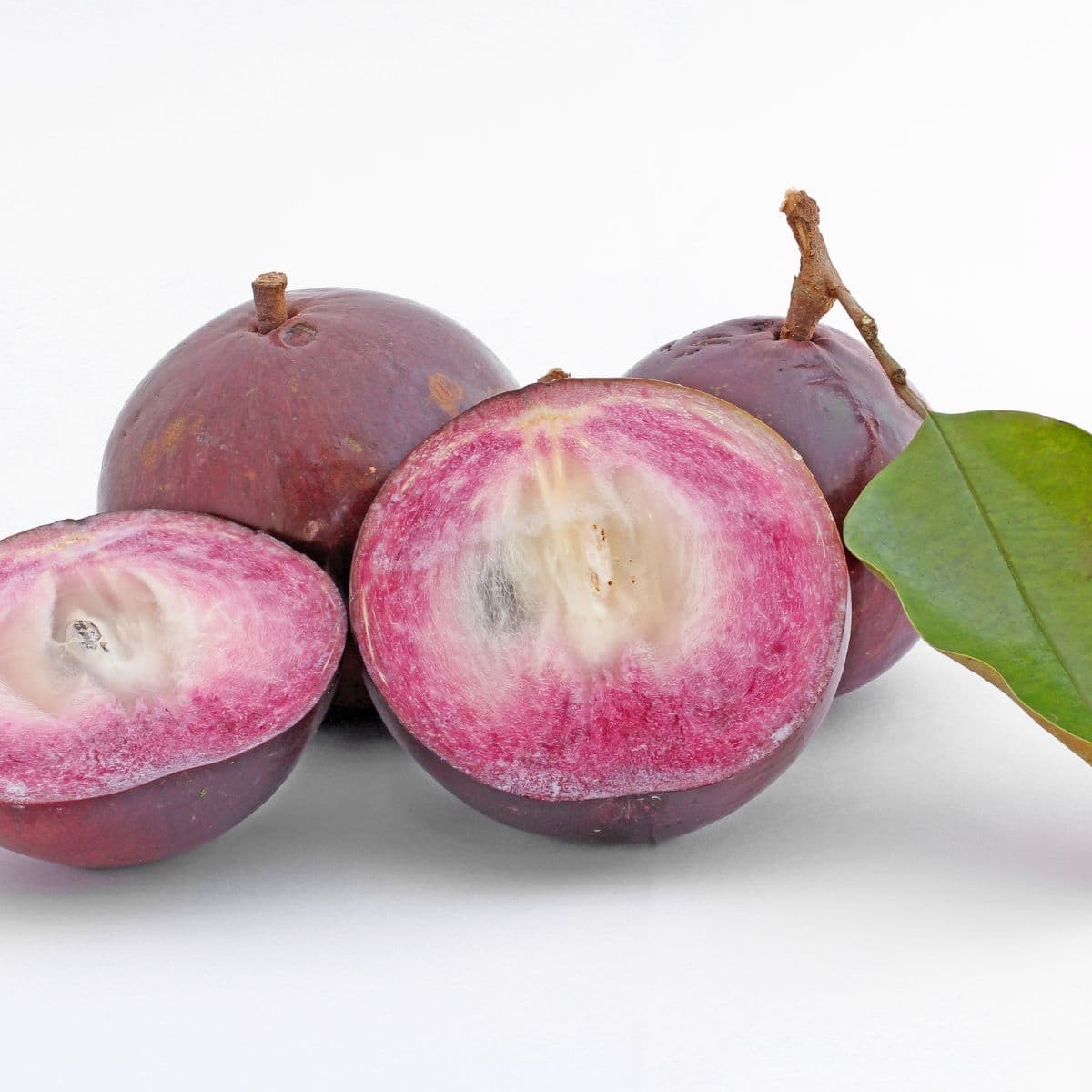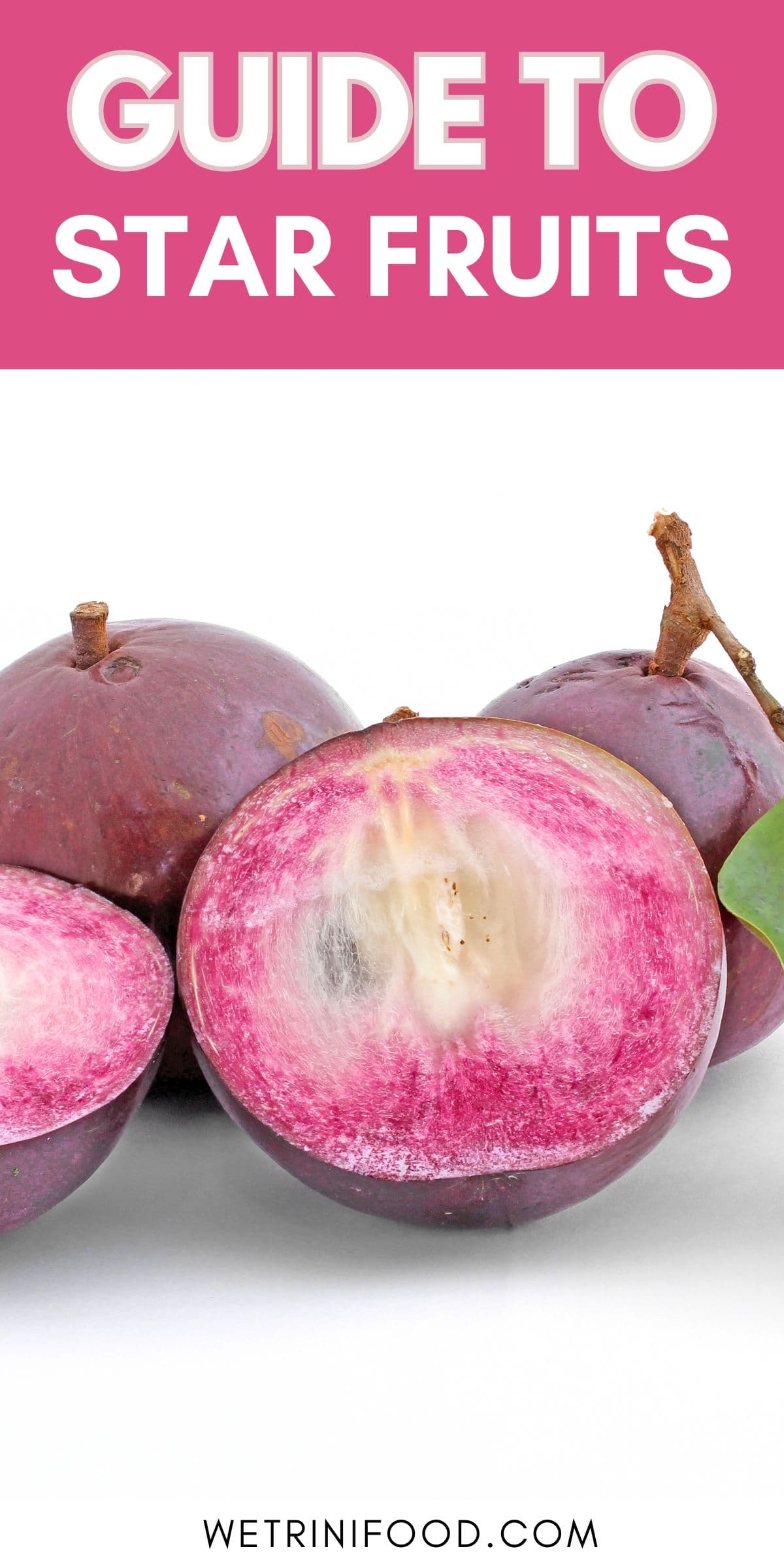Caimite or Star Apple Fruit: Benefits, Taste, and More
Caimite (pronounced kah-eye-mit) or star apple is a sweet local fruit in the Caribbean and Latin America. It is a perfectly round, plum-sized fruit with very smooth skin and sweet, jelly-like flesh.
There are a few varieties of caimite: green, yellow and purple. Green and yellow skinned caimites have pale to white flesh. Purple skinned caimite has a deep purple rind and flesh, but the center is often pale to white in color.
If you enjoy content on exotic fruits, check out these articles on breadfruit and Jamaican apple (pomerac).
What is caimite or Jamaican star apple
Caimite is part of the Sapodilla family and has similarities to mamey sapote and others. Its botanical name is Chrysophyllum caimito. And it is sometimes called:
- caimito
- star apple
- star plum
- milk apple
- cainito
As I mentioned before, there are a couple varieties of star apple. They differ in their skin color and pulp color. But all star apples are edible and contain jelly-like pulp with a runny, milky latex.

The latex is most prevalent in the skin and the thick layer underneath the skin of the fruit (the rind). It is best to avoid eating those parts of the fruit since the latex can stick onto your skin and lips and dry them out.
The translucent, jelly-like center of the fruit is best.
How to grow caimite
Caimite is native to the Caribbean and so requires tropical heat and humidity to grow best.
The trees are most often grown from seed and will take anywhere from five to ten years to mature. Grafted plants, however, mature must faster.
The trees tend to be very tall – some are upward of fifty feet.
Caimite trees also need very little tendering once they are established. But, they do prefer well-draining soil.
Pomerac (Jamaican apple) trees are also quite tall and require little attention.
Benefits of caimite
Caimite or star apple is not well studied. The fruit contains low levels of Vitamin C, calcium and phosphorous.
It’s rich in antioxidants
A 2002 US study looked at the antioxidants in the caimite fruit. It found nine potent antioxidants in it.
If you’re into the science, the antioxidants included: catechin, epicatechin, gallocatechin, epigallocatechin, quercetin, quercitrin, isoquercitrin, myricitrin and gallic acid
The leaves are anti-inflammatory
A 2014 animal study found caimite leaf extract reduced pain sensitivity and inflammation in mice.
Those are all the studies I found on star apple. It really isn’t well researched.
What do star apples taste like
Ripe star apples have a very sweet, pear-like taste with a mushy, jelly-like texture. When green, the pulp is firmer and sour.
The fruit is best enjoyed when ripe – when its skin is wrinkled, less shiny and soft to the touch.
How to eat star apples
Wash and cut the fruit in half. Spoon out the pulp in the center and enjoy cold.
Discard the seeds, rind and skin.
What else do you do with caimite? Let me know in the comments below.
Pin this:


How do I know when the green star apple is ripe?
When the skin is slightly wrinkled and dull in color, it is ripe and ready. If it looks a bit shiny in color it’s not ripe enough.